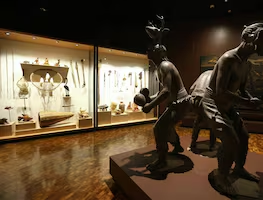Más Información
Accounts such as the foundation of Mexico-Tenochtitlan and several stories of the peoples who inhabited the Valley of Mexico, such as the natives of Texcoco, Chalco, Tacuba, and Azcapotzalco, can be found in this ancient manuscript.
In 2014, the Mexican Government, through the National Institute of Anthropology and History ( INAH ), acquired the manuscripts of the Chimalpahin Codex through negotiations with the auction house of the Bible Society in London .
Previously, the manuscript was part of the archive of the Cambridge University Library , yet thanks to a successful purchase, it is now in the National Library of Anthropology and History.
According to Ph.D. Gabriel Kenrick Kruell , researcher at the Institute of Historical Research of the National Autonomous University, this codex is a collection of manuscripts dating from the late 16th century or early 17th century.
The manuscripts were written by Domingo Francisco de San Antón Muñón Chimalpahin Cuauhtlehuanitzin and Fernando de Alva Ixtlilxóchitl, indigenous historians during the New Spain era, and is written in both, Spanish and Náhuatl.
Kenrick notes the historians didn't only include their own work, but also several historical documents they collected and others documents referencing their stories, written by other historians, such as Hernando de Alvarado Tezozómoc and Alonso Franco.
The Chimalpahin Codex is “truly a world of stories to be known and spread,” says the researcher, considering the Codex includes the tale of the foundation of Mexico.
Even if a considerable number of the Codex's documents are in Spanish, it's unlikely that it could be fully understood nowadays since the Spanish of the 16th or 17th centuries was very different from our current Spanish – several words were written with other letters and ortographic conventions were different.
Therefore, there is currently an intererst in modernizing the text, which implies the transliteration and the translation of the documents in Náhuatl to Spanish. This project aims to make the content of the Codex available to the general public.
The Chimalpahin Codex has been fully digitalized and can be read at http://www.codicechimalpahin.inah.gob.mx/ , where supplementary information is also provided.
am










